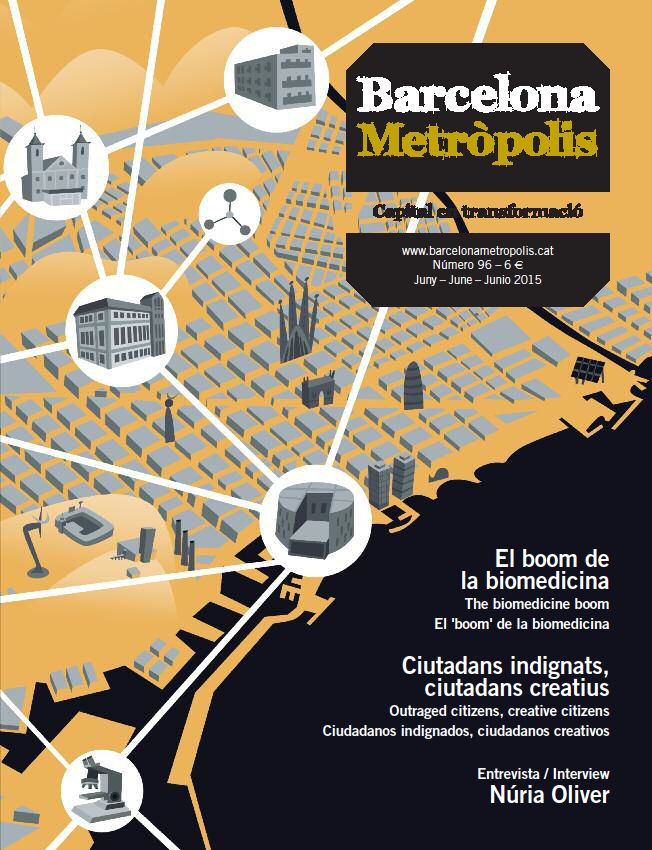Scientific advances have increased life expectancy by thirty years in the last century. This increase comes with a price: ageing-associated diseases like cancer, Parkinson’s and Alzheimer’s. Researchers focus on finding ways to keep these diseases from advancing.
It would have been far more difficult to reach old age if we had been born a century ago. Scientific advances made over the last century, which have eradicated some diseases and made others less chronic, have increased life expectancy by more than thirty years. This increase, however, comes with a price: a rise in the prevalence of ageing-associated diseases like cancer, diabetes and heart disease, along with neurodegenerative diseases like Alzheimer’s and Parkinson’s.
Science, and in particular biomedicine, has emerged as a fundamental tool in this context. According to the latest Biocat 2013 report, Catalonia is the leader in biomedicine research and innovation in Spain. The region is home to a large number of science parks and research centres crucial for conducting pioneering research, and is considered one of Europe’s major biomedical hubs. Some of the scientists who research ageing and its associated diseases are global leaders in the field.
This is the case of Pura Muñoz-Cánoves, an ICREA researcher at Pompeu Fabra University, who published a study in Nature magazine that changed the way science views ageing. “We age gradually, almost imperceptibly, but then we go into a sudden, dramatic and irreversible decline, which coincides with old age, when tissues lose the ability to regenerate”, explains the expert.
Muñoz discovered that, at least in muscle, in the tissues she studies, this point of no return occurs with the appearance of a protein called P16, which is responsible for this sudden decline. Experiments with mice demonstrated that the regenerative capacity of stem cells can be restored if this molecule is blocked, resulting in a certain rejuvenating effect.
Twenty-first century epidemics
Two of the diseases in which ageing is the most significant risk factor are Alzheimer’s and Parkinson’s, both considered twenty-first century epidemics by experts. The causes of these complex diseases are unknown and there is no cure, only treatments to alleviate the symptoms and try to prevent their progression. Alzheimer’s is a disease that affects one in ten people aged sixty-five and older and its prevalence is on the rise. In a study published last year, Alzheimer’s Disease International estimated that there will be 135 million people with dementia worldwide by 2050 and Alzheimer’s disease will be its most common form.

Albert Armengol
A group of elderly individuals exercise on the gymnastics equipment behind Barcelona’s Biomedical Research Park.
Natàlia Carulla holds a Ramón y Cajal researcher post and focuses her research at the Institute for Research in Biomedicine (IRB Barcelona) on beta-amyloid, a protein known to contribute to the disease. She developed tools and methodologies to study this molecule in the laboratory. It is known that there is a point when cells secrete more beta-amyloid, which, being very sticky, builds up and begins to form clusters with different structures. “We want to find out whether there are certain beta-amyloid patterns that are more toxic to cells than others and whether they contribute to neuronal death. Discovering these patterns would be vitally important for developing therapeutic molecules that prevent their formation and therefore their toxicity”, explains Carulla.
Patrick Aloy, an ICREA researcher and leader of the Structural Bioinformatics and Network Biology group at the same centre, also studies Alzheimer’s disease, but takes an entirely different approach. Instead of focusing on only one cause of Alzheimer’s, Aloy studies them as a whole, linking them in a type of network of protein and gene interactions. “We hope to create a dynamic computer model of the disease that allows us to represent its evolution at the molecular level in order to understand its origin and learn how it evolves, and ultimately to develop drugs that stop the disease from progressing”, says Aloy.
Early brain alterations
One of the most important advances in Alzheimer’s disease research was made in the last six years, when it was discovered that, although the symptoms occur in old age, the brain begins to change up to two decades before these symptoms appear. José Luis Molinuevo, a neurologist at Hospital Clínic in Barcelona and the director of the BarcelonaBeta Brain Research Center at the Pasqual Maragall Foundation, is the individual behind this discovery. “Ten years ago we started to study healthy people; when we performed lumbar punctures and analysed their cerebrospinal fluid, we found abnormal concentrations of proteins that we know are involved in Alzheimer’s disease. We discovered that their brains were already altered, that they functioned differently, and we could see in the MRI that there had been a loss in cerebral cortex thickness”, says Molinuevo.
Discovering that the disease begins to take shape after the age of forty meant a paradigm shift. Now the focus is on preventing Alzheimer’s disease rather than trying to cure it. “It’s about leading a healthy life, watching your cholesterol, weight, blood pressure, sugar. Don’t smoke, do daily cardiovascular exercise, get eight hours of sleep a night and also be socially active”, advises Jordi Camí, the director of the Pasqual Maragall Foundation. Along these same lines, the foundation launched a pioneering study called ALFA (Alzheimer’s Disease and Families), in which 2,700 children of Alzheimer’s patients between the ages of forty-five and eighty are participating. These volunteers are monitored for years and undergo a series of tests, from cognitive tests to brain imaging and lumbar puncture, in order to get a step-by-step picture of what happens in the brain to produce neurodegeneration.
Parkinson’s disease is another ageing-associated disease. According to the European Parkinson’s Disease Association (EPDA), 6.3 million people suffer from the disease worldwide. Symptoms tend to appear in patients in their sixties, although 10% of patients are diagnosed when they are younger than fifty. With this disease, problems with movement are caused by a progressive loss of neurons that produce dopamine, a type of neurotransmitter and a key element in motor control.
At the Centre for Genomic Regulation (CRG), researcher Eulàlia Martí is developing a line of research on non-coding RNA, a type of molecule that, while responsible for producing proteins, plays an important role in modulating the expression and function of other genes. Non-coding RNA is essential for proper cell function, and scientists have found that impairment of this function can trigger disease processes.
Martí studies brain samples at different stages of the disease as well as healthy brain tissue in order to determine whether there are abnormalities in the expression of these molecules and, if so, which ones. “We have seen that the expression of these molecules is disrupted in preclinical stages, that is, before the person has been diagnosed with Parkinson’s disease”, says Martí. She also conducted in vitro experiments in which she grew neurons on plates, manipulated their non-coding RNA to mimic the pattern of regulation seen in the brain, and thus confirmed that the cells “reproduce processes typical of Parkinson’s disease”. “Certainly, these are initial disruptions that are later involved in the disease’s progression. This may be important for understanding the disease, and because it opens a window to treatment”, she explains.
Although there is currently no cure or effective treatment for these diseases, experts are optimistic and believe that in the not-too-distant future we will have a better understanding of the foundations of their prevention and treatment.




